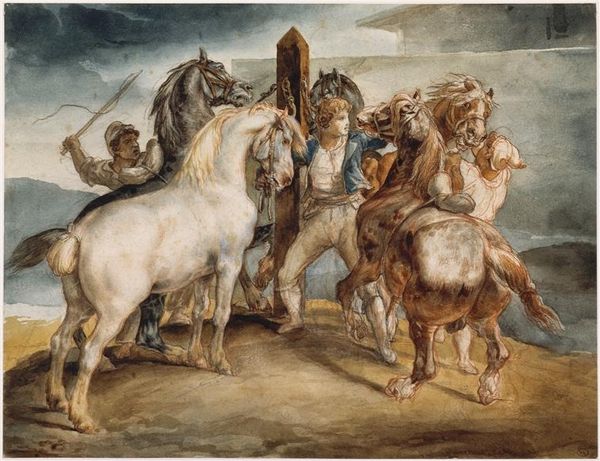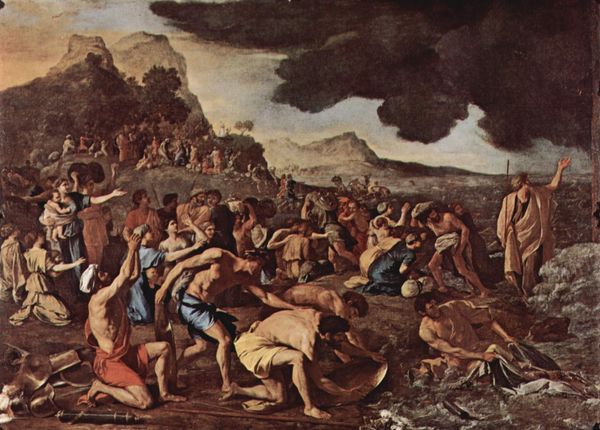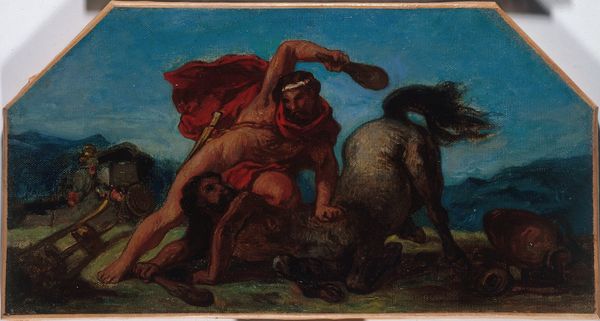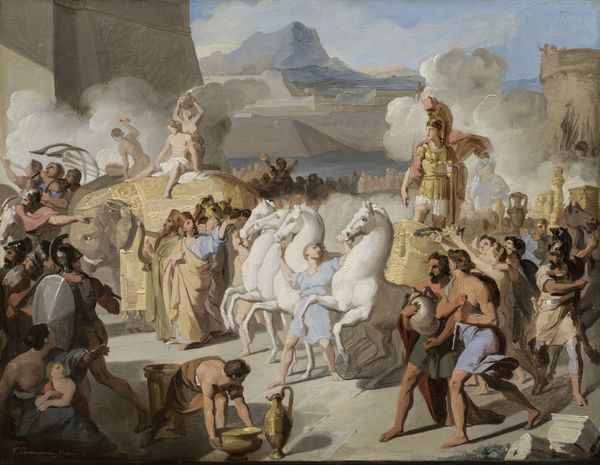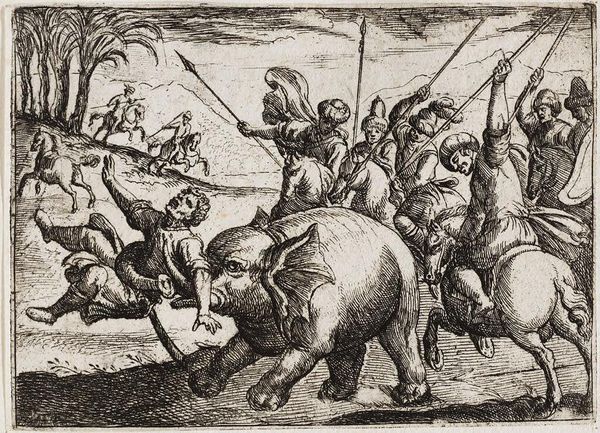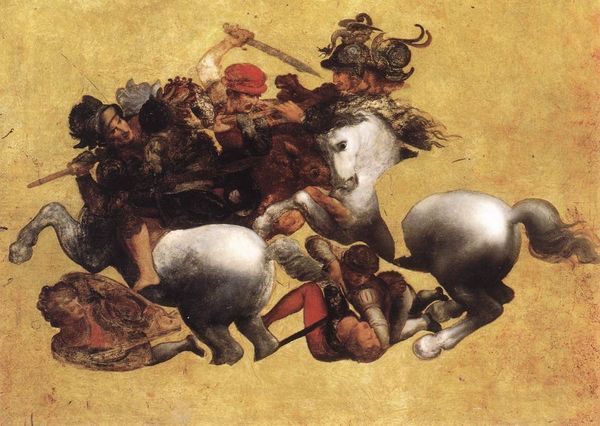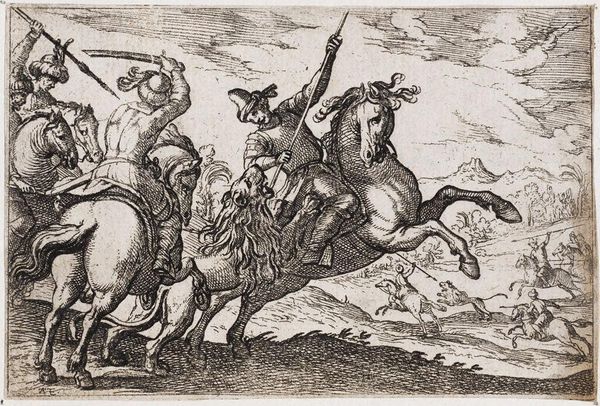
Dimensions: 39 x 67 cm
Copyright: Public domain
Curator: Giovanni Domenico Tiepolo painted this oil on canvas, "The Procession of the Trojan Horse in Troy," in 1773. It depicts the moment the Trojans bring the massive wooden horse within their city walls. My first thought is what a scene of controlled chaos it is. Editor: Controlled is certainly the operative word for the society within these walls. Look at the clear attention to the straining figures pulling the immense weight. We see the horse itself seems roughly constructed, alluding to a rushed endeavor focused on functionality rather than finesse. This points to the crucial role of craftspeople. Curator: Absolutely. Tiepolo presents this pivotal moment in the Iliad, but there is very little glamour. The painting itself functions as an artifact, capturing and reinforcing existing notions of conquest. Editor: Agreed. You see, there’s this inherent irony when observing history paintings of mythological subjects, isn't there? Tiepolo’s choice to focus on the labor and the bulky construction material – likely wood – speaks to a changing sensibility toward the creation and reception of artwork. Who built this monumentally deceptive device and at whose expense? Curator: Considering the history and narrative around the siege of Troy, it's a loaded visual representation. A magnificent sculpture for one group signals complete destruction to another. One wonders how different groups understood and received this artwork through their socio-political perspectives, as art is deeply linked with shaping public perception of historical and mythological events. Editor: Yes, this act, pulling the horse, is presented as celebratory; yet in truth it carries doom. The visual representation here reveals a lot about power, perception, and how narratives are constructed through material culture. Even how Tiepolo crafted the scene influences the telling. Curator: It’s fascinating to consider how such events solidify into canonical imagery, shifting away from labor to celebrate conquest. Editor: Indeed. Analyzing such a scene using an eye trained to see past heroism enables consideration of far more nuanced realities surrounding labor, power, and perspective, providing insight to art's purpose, production and reception within any culture.
Comments
No comments
Be the first to comment and join the conversation on the ultimate creative platform.


